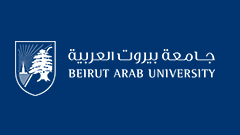Keywords
Beirut, ENVI-met, Urban canyon, Hot Humid Climate, PMV
Disciplines
Architecture | Business | Life Sciences | Medicine and Health Sciences
Abstract
This paper investigates the effect of urban areas on local climate by examining the correlation between urban morphology, land use and urban thermal climates. It focuses on Gemmayzeh area in Beirut. Urban parameters were evaluated by developing an energy balance model with the aim of understanding how heterogeneous geometry, height, and finishing material can change the mechanical and thermal structure of the urban atmosphere. It simulates the current urban condition in order to compare it with other scenarios using ENVI-met 4.The results from the numerical simulation reveal that a network of green infrastructure connecting the existing green patches can ameliorate heat extraction and improve the outdoor thermal comfort level. The PMV value at the pedestrian level is reduced from extreme heat stress to moderate heat stress near the green areas. The study concludes that Beirut city center can mitigate the urban heat island by using vegetation and especially green roofs and densification of high trees in the left over spaces.
Recommended Citation
Mohsen, Hiba; Raslan, Rokia; and El- Bastawissi, Ibtihal
(2020)
"EVALUATING THE TRANSFORMATION OF LAND USE AND MORPHOLOGY ON THE MICROCLIMATE: THE CASE OF GEMMAYZEH NEIGHBOURHOOD – BEIRUT,"
BAU Journal - Health and Wellbeing: Vol. 3:
Iss.
1, Article 11.
DOI: https://doi.org/10.54729/2789-8288.1133
Included in
Architecture Commons, Business Commons, Life Sciences Commons, Medicine and Health Sciences Commons

